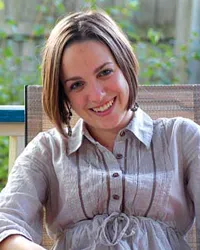Erin Heaney '09 Helps Marshal People Power to Battle Polluter in Buffalo, N.Y.

The Buffalo News: People Power Beat Tonawanda Coke
Power to the people. Technically, it was the U.S. Attorney's Office that brought the case and federal and state regulators who gathered the evidence that ultimately brought down Tonawanda Coke. But make no mistake: None of that would have happened, had not the people living downwind of the toxin-spewing plant learned to stand up and fight.
But it was so-called ordinary people - with help from an organizer fresh out of college - whose outcry paved the path to victory. The company was convicted Thursday of 14 counts of polluting the air and ground of the surrounding neighborhood. Plant official Mark Kamholz faces up to 75 years in jail. He and the company are looking at upward of $200 million in fines. ...
"The residents had the power all along," said Erin Heaney ['09], head of the Clean Air Coalition. "They just needed a little help binding together. That's what an organizer does."
Just 26, barely 5 feet tall with doe eyes, Heaney's unimposing presence masks a fighter's heart. Above her desk in a dorm-like downtown office is a Frederick Douglass quote that amounts to a mission statement: Power Cedes Nothing Without a Demand.
The Buffalo native joined the Tonawanda Coke battle less than four years ago, fresh out of Swarthmore College. She brought the organizing skills learned during years of human rights activism. The Clean Air Coalition was an unfunded community group, founded by Jackie James Creedon, before Heaney showed up. They had collected air samples, rallied residents and met with elected officials.
"I was impressed by how much they had done," Heaney told me.
But they needed someone who knew how to pump up the volume; someone who knew how to turn a neighborhood battle into the community crisis it was.
"The story needed to be told in a more public way," Heaney said.
Meetings and letter-writing escalated into picketing, protests and press conferences. The coalition publicized campaign contributions from plant officials to politicians and solicited testimonials from cancer-stricken residents. All of it attracted media coverage, which pressured elected officials, who, in turn, encouraged watchdog agencies to grow some fangs. It was the classic snowball effect.
"There's an imbalance of power between an industrial polluter and the people who live in the neighborhood," Heaney noted. "We had to change that ... by working to turn popular opinion against Tonawanda Coke."
Charlie Cobb was chairman of the coalition's board when Heaney was hired as executive director. It was the summer of 2009.
"I told her this was like a pool of gasoline, but we needed someone who knew how to throw the match in," Cobb recalled. "She was the spark that ignited the whole thing."
Heaney's first challenge was helping ordinary folks to find their inner activists. Most residents were reluctant to protest or picket, until plant owner J.D. Crane wrote a letter rejecting U.S. Sen. Chuck Schumer's request for a community meeting. Crane infamously dismissed residents' claims that the plant spewed toxic waste as "a bun with no burger."
That put-down was the engine of Tonawanda Coke's demise.
"I took that letter to a [community] meeting and asked, 'How do you feel about having that rally now?' " Heaney recalled. "They were like, 'Let's go.' "
The subsequent protest outside the plant climaxed when a wig-adorned, cancer-battling resident grabbed the bullhorn. It elevated the movement on the media's radar screen, culminating in an Oct. 11, 2009, front-page story in The Buffalo News. During court testimony, an EPA official said the story by News reporter Mark Sommer sparked the agency's investigation. Two months after the story appeared, EPA investigators raided Tonawanda Coke, after company officials ignored the agency's demand to submit to testing for hazardous materials.
The cavalry had ridden to the rescue.
Plant officials' lies and cover-ups ultimately led to Thursday's convictions. Ten years after the Clean Air Coalition formed, and less than four after Heaney took over, Tonawanda Coke was brought to heel for presumably decades of befouling the neighborhood.
The scary part is Heaney nearly did not sign on. Home in Buffalo for a week after college graduation, she was packing for a youth-organizing job in Rhode Island when a family friend called. He said a community group living near a waste-spewing plant could use her help.
Heaney was skeptical, until she drove up River Road and turned onto Kaufman Street, a run of modest homes in the shadow of the smokestacks. On one side of the street is a playground, on its fence a grimly ironic sign: No Smoking, Young Lungs at Work.
"I saw those houses sitting next to the plant and thought, 'I want in,' " Heaney recalled. " 'This is something I have to do.' "
Erin Heaney '09 graduated with a B.A. in political science and sociology & anthropology. At Swarthmore, she was one of the founding members of STAND, the student-led division of Genocide Intervention Network that now has hundreds of chapters nationwide. Recognition for her work with the Clean Air Coalition of Western New York includes being featured as the Huffington Post's "Greatest Person of the Day" and being named to Buffalo's 20th annual Business First 40 Under Forty list.



